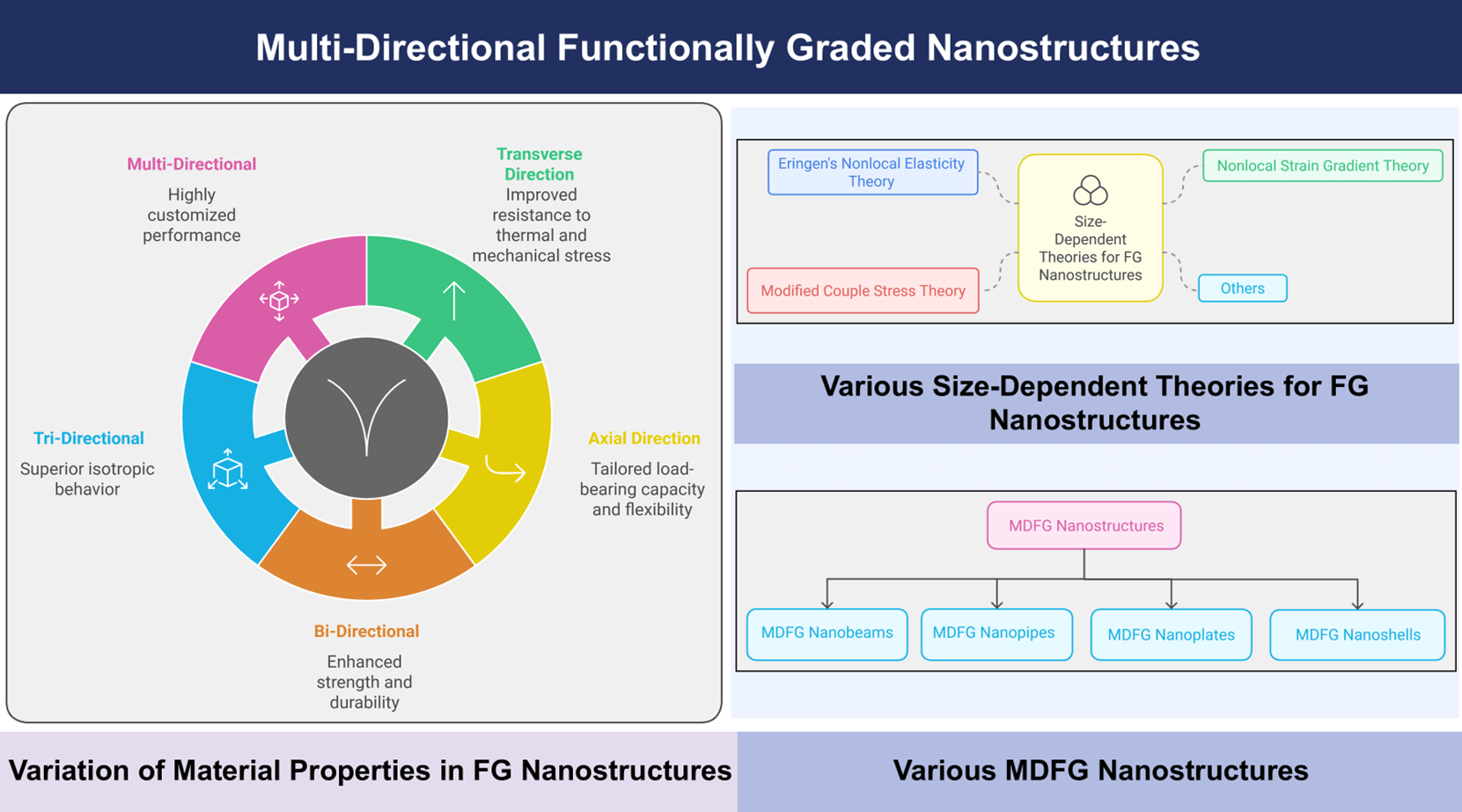 Open Access
Open Access
REVIEW
Advanced Computational Modeling and Mechanical Behavior Analysis of Multi-Directional Functionally Graded Nanostructures: A Comprehensive Review
Department of Mathematics, National Institute of Technology Rourkela, Odisha, 769008, India
* Corresponding Author: S. Chakraverty. Email:
(This article belongs to the Special Issue: Theoretical and Computational Modeling of Advanced Materials and Structures-II)
Computer Modeling in Engineering & Sciences 2025, 142(3), 2405-2455. https://doi.org/10.32604/cmes.2025.061039
Received 15 November 2024; Accepted 22 January 2025; Issue published 03 March 2025
Abstract
This review explores multi-directional functionally graded (MDFG) nanostructures, focusing on their material characteristics, modeling approaches, and mechanical behavior. It starts by classifying different types of functionally graded (FG) materials such as conventional, axial, bi-directional, and tri-directional, and the material distribution models like power-law, exponential, trigonometric, polynomial functions, etc. It also discusses the application of advanced size-dependent theories like Eringen’s nonlocal elasticity, nonlocal strain gradient, modified couple stress, and consistent couple stress theories, which are essential to predict the behavior of structures at small scales. The review covers the mechanical analysis of MDFG nanostructures in nanobeams, nanopipes, nanoplates, and nanoshells and their dynamic and static responses under different loading conditions. The effect of multi-directional material gradation on stiffness, stability and vibration is discussed. Moreover, the review highlights the need for more advanced analytical, semi-analytical, and numerical methods to solve the complex vibration problems of MDFG nanostructures. It is evident that the continued development of these methods is crucial for the design, optimization, and real-world application of MDFG nanostructures in advanced engineering fields like aerospace, biomedicine, and micro/nanoelectromechanical systems (MEMS/NEMS). This study is a reference for researchers and engineers working in the domain of MDFG nanostructures.Graphic Abstract

Keywords
Cite This Article
 Copyright © 2025 The Author(s). Published by Tech Science Press.
Copyright © 2025 The Author(s). Published by Tech Science Press.This work is licensed under a Creative Commons Attribution 4.0 International License , which permits unrestricted use, distribution, and reproduction in any medium, provided the original work is properly cited.


 Submit a Paper
Submit a Paper Propose a Special lssue
Propose a Special lssue View Full Text
View Full Text Download PDF
Download PDF Downloads
Downloads
 Citation Tools
Citation Tools
